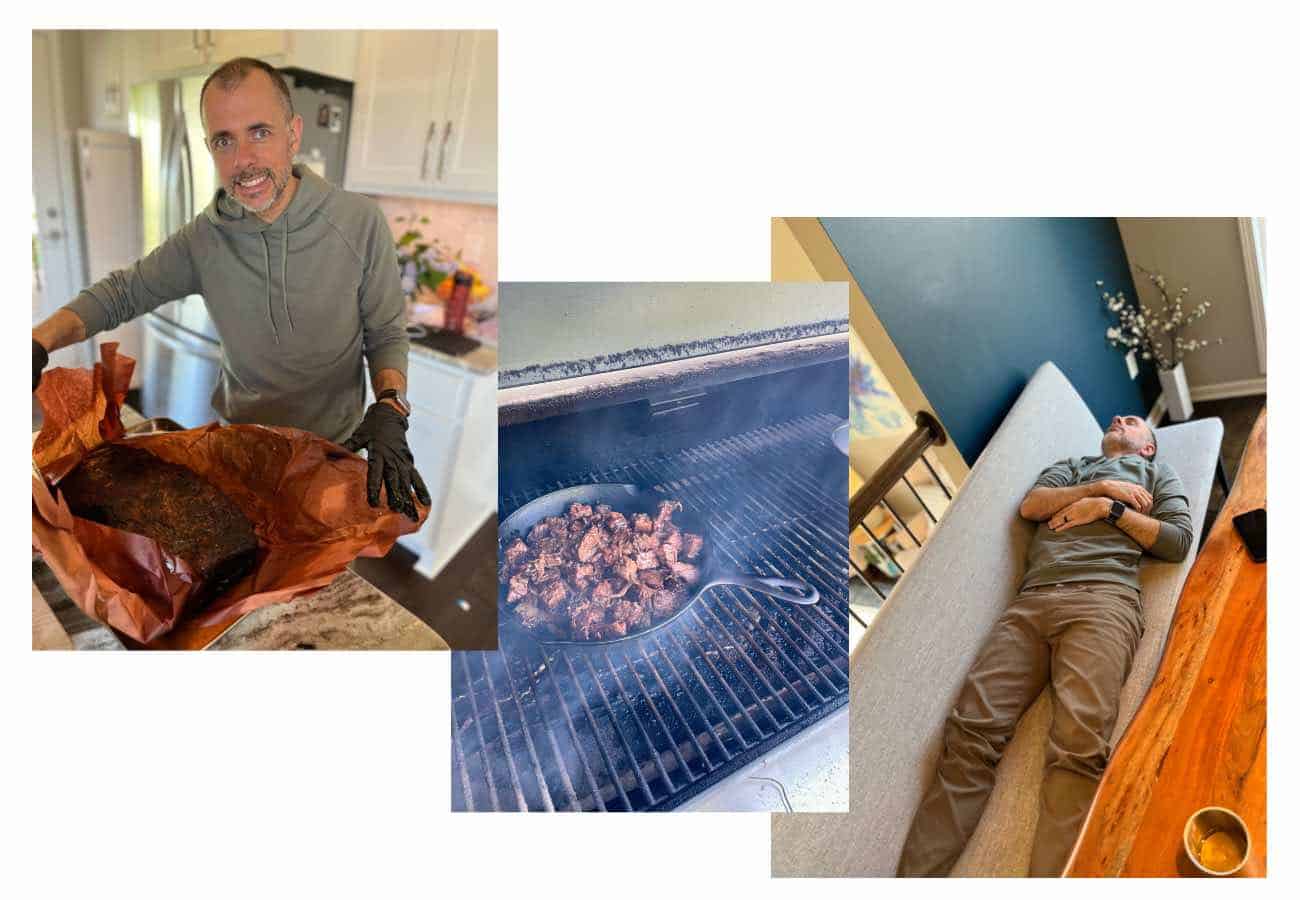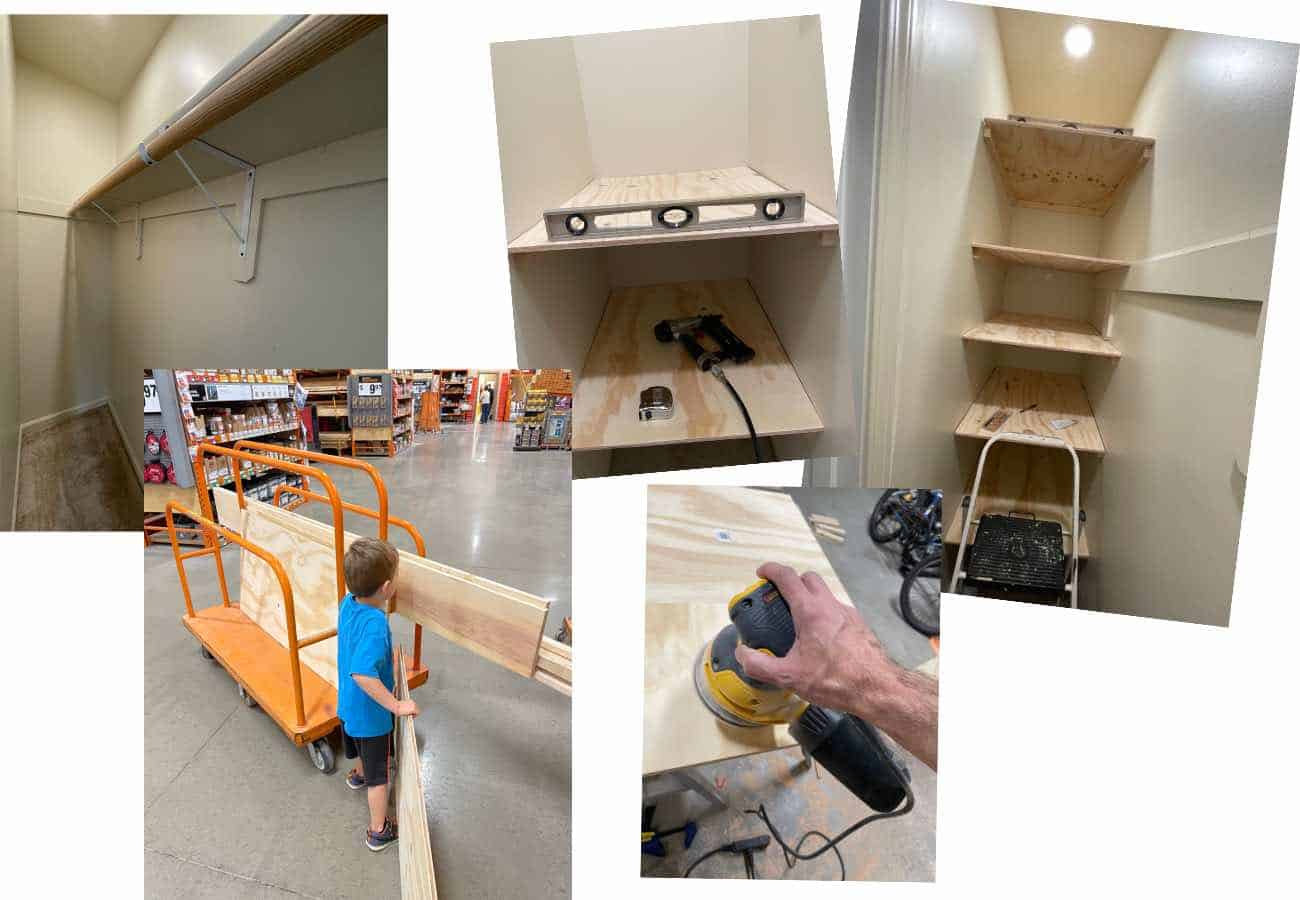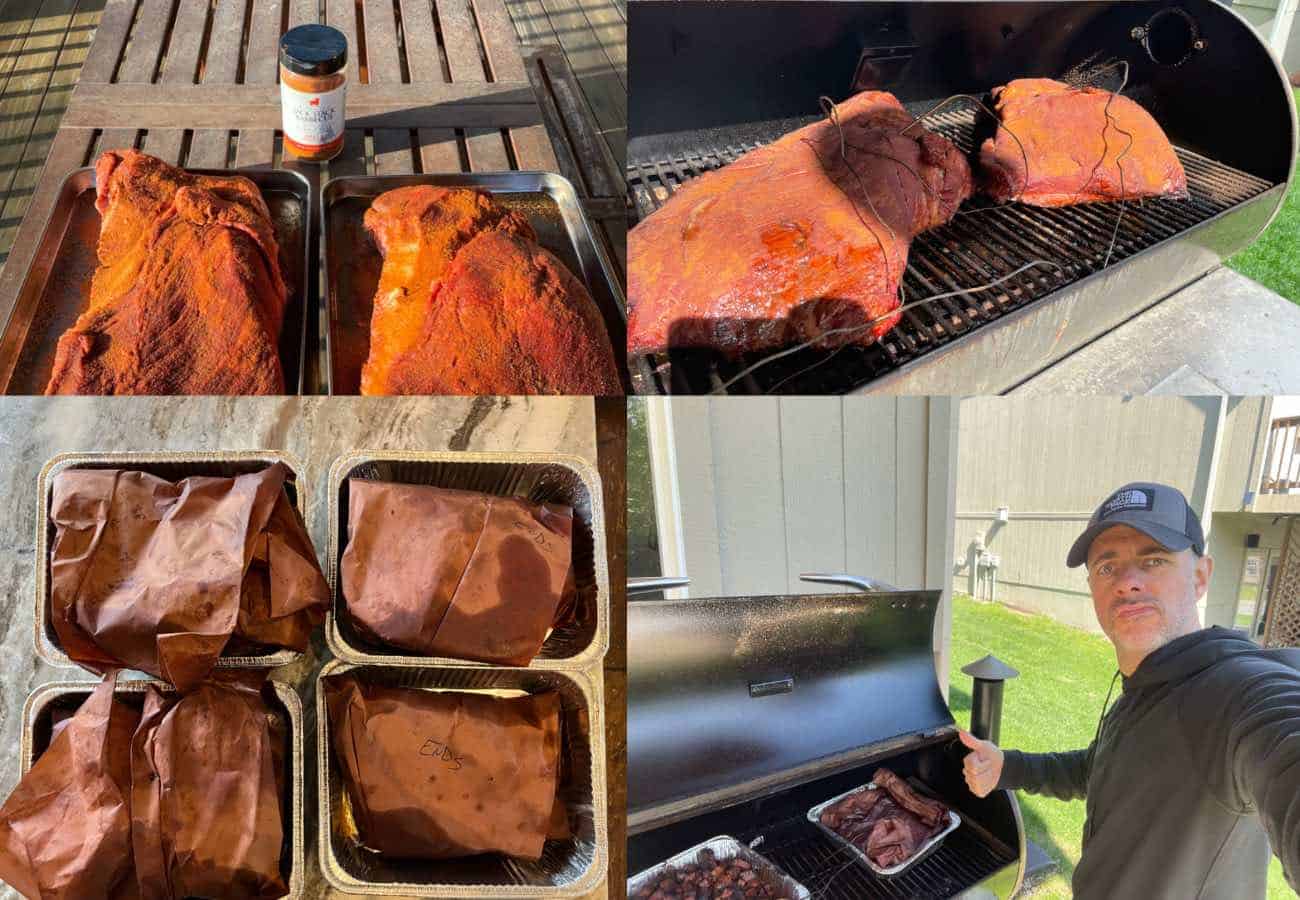As the warmer months are finally upon us, here’s a refresher on my four rules of book buying:
- Don’t be a wimp about it.
- Don’t stress about reading them cover to cover.
- Make notes and mark up the margins.
- Share what you learn.
As the warmer months are finally upon us, here’s a refresher on my four rules of book buying:
“For me, one of the signs of health in emotional margin is how much I’m writing in my notebook each week. If pages begin to stack up without any notes, ideation, or doodling, it’s a sign that I’m not slowing down enough to think on paper.”
Great article by Isaac this week on The Focus Course blog about the draw to return to analog tools.
A lot of productivity and time management advice includes all the things you should not do.
Why is so much productivity advice about what NOT to do?
The choices you make about your time and focus should be about what you are saying YES to.
The problem is that it is a lot harder to figure out what you want.
It’s far easier (and more dramatic) to focus on what to avoid than it is to take the time to figure out what to embrace.
In fact, the whole reason we are saying NO to some of those things is so that we can actually say YES to what we really want to do.
I am not going to check my email before lunch because I would rather spend that time writing.
Having a long list of things you don’t do will not make you productive.
What do you do in the time you’ve created for yourself? What do you choose to say YES to? Saying YES to the right thing is what makes you productive.
No is easy. Yes requires focus.
I was recently flipping through Greg McKeown’s book, Essentialism, and came across this quote that I had highlighted:
“If you believe being overly busy and overextended is evidence of productivity, then you probably believe that creating space to explore, think, and reflect should be kept to a minimum.”
It is dangerous to be overly urgent and busy. Because it will distract us from slowing down.
One definition of Focus is “Maximum Clarity”. But, in life, having maximum clarity doesn’t always mean having absolute, perfect clarity. Focus can be a graduating scale.
Sometimes, having maximum clarity right now, may still seem a bit vague… maybe you are only 80% confident and clear. But that’s the best you’ve got right now so you make the best decision you can at the time with the values, motivation, and information available to you right now.
Thus you must make a decision with the most amount of clarity you have right now. Knowing that, as you move forward, things will come more into view and you can make adjustments.
A few weeks ago I shared about how my company just celebrated its 11-year anniversary. And many of you emailed me with some fantastic questions about running a business, etc.
So I’m wanted to answer a handful of them here. Let’s go….
. . . . .
“What did you give up and what did you gain vs. a corporate job?” (From Brendon)
There were a lot of tradeoffs between my previous job (a marketing director for a large non-profit), versus my self-employed job. In the early days, my hours were still pretty crazy — it took me a few years to finally slow down, work reasonable hours, and to take vacation.
Financially, I was able to fully replace my previous salary beginning on day one. Back in 2011, my business made money from sponsorships, affiliates, and a paid membership access to my private podcast. Today we are entirely supported by our customers who buy our online courses and clients who hire us for coaching and consulting. (Though we do have something brand-new though that I’ll be introducing in June.)
Something else I gained by starting my own business is autonomy. There are pros and cons to this. It means I get to decide the direction my team and I are going. But it also means I have to define the vision for our company — who we are, what we do, etc. It’s an incredible privilege and after 11 years, I still love it and wouldn’t trade it!
. . . . .
“Do you think present-you could have convinced just-starting-up-you to adopt the 8-week work cycle?” (From JJ)
I was nearly 6 years into running my business before we began testing the 8-week work cycle. Most folks focus on the week-long sabbatical break that comes every other month. But, that is only one element to the whole cycle.
The week-long break is there to help you stay on track during your focused work cycle, to celebrate the progress you’ve made during that time, and then to allow you you reset for the next work cycle.
So, don’t start by focusing on the break. Don’t ask this: “Can I get away with taking a week off every other month?”
Instead, ask this: If I were more focused and intentional, could I get 8 weeks worth of work done in just 6 weeks?
Think of it this way: If you could sit down with yourself on Monday morning and say, “Here is exactly what I need you to get done this week. Once you’ve done these things, then you are done for the week.”
Chances are very good that you would get your projects and tasks done well before Friday at 5pm. And here’s the wild thing: It’s actually easier to compress 8 weeks worth of work into 6 weeks than it is to compress 5 days worth of work into 4. Because the time window is so much bigger, you have a better chance at hitting your goal and you have the margin to work around bumps in the road.
As founders and leaders, we tend to go find more work for ourselves. It can be easy to feel that we are being wasteful or negligent when we aren’t doing something.
All that to say, if it were Present-Day Me trying to convince Just-Getting-Started Me in the value of the 8-week work cycle, I would focus on how much you can actually get done if you are focused. And then, instead of just adding more work on top — celebrate that progress by taking a break. This makes your work far more sustainable in the long run.
. . . . .
“I am wanting to start a side business as a coach and advisor. What do you think is the best way to put myself in front of other creators?” (From Justin)
It’s simple, but not necessarily easy. There are a few ways to get started.. In no particular order, here are a few ways to begin getting traction:
Remember ABC: Action Brings Clarity. Get started to get started, and once there is movement you’ll get much more clarity about how to keep going.
Recommended book: The Snowball System. Mo has a fantastic framework for business development that is straightforward and works.
. . . . .
“My productivity slows down when I have to sit down and write something. From a proposal to an email. What do I do?” (From Myles)
When a task seems very daunting and I just don’t want to do it, I will often just set a 5-minute timer and commit to working on the activity for the next 5 minutes. Then, when the timer is done I am free to quit that task and move on to something else. (Oftentimes, I get momentum going and end up finishing.)
. . . . .
“How do you balance being generous with your work and making money?” (From Joschua)
Something I learned a few years ago was to stop trying to “balance” this. I used to feel that they were at odds with one another, but I now see how they go hand in hand.
The primary way I do both of these is with a dedicated checking account that gets money put into every month from the profits of the business. I use that account to fund non-profits, charity work, and giving to others. So, right off the bat, there is a baseline of generosity built-in to the way I handle my personal and business finances.
Secondly, I am very confident in the value and quality of the training that we offer. So I never feel conflicted in our pricing or in running a profitable business.
This is a fantastic Twitter thread from Marie about how she has been using Notion to journal for the past 1,000+ days.
(See also how Chloe has begun using Notion to track her habits.)
This is a great, short video about the value of getting bored and making stuff. (p.s. Give “Herbert’s” phone schedule a try for a few days and let me know what you think.)
I try to make as few decisions each day as possible.
Here are some of the things I’ve “automated” about my day, and why it matters.
Years ago, I started with automating the trivial parts of my life:
I rarely make those same choices every day as if they were “new”. I’ve mostly become boring about the trivial stuff, so that I don’t have to think much about it every day.
Next, I removed as many of the non-trivial decisions from my day as possible as well.
I did this by creating routines for growth in my life. Things such as:
By creating routines for growth in each area of my life I don’t have to think about growth decisions every day. Instead, I simply have to show up and stick to my routine.
By “automating” parts of my day, it means two things…
See? Routines are sexy.
By automating parts of my daily life, I don’t think and decide about the same things over and over and over every day.
This lets me save my “decision energy” for the things that really NEED it. Such as being present for relationships, creating new things, and solving interesting problems.
It’s been more than 18 months since my company switched from Basecamp to Notion for managing our entire editorial calendar and all other projects as well.
There are a lot of great things and a lot of frustrating things about Notion. Here is a behind-the-scenes look at the good and the frustrating.
In this excellent article from Paul Graham, he talks about the fact that a lot of work kinda sucks — that’s the nature of it a lot of time. And so you have to just dive on in and do it.
But, unfortunately, a lot of people and teams will shy away from the work that sucks — because, well, they don’t want to do it. Who does? But it’s often the unpleasant work that leads to big breakthroughs and successes.
And so, a Paul says, that’s not to say you should go out of your way to seek out unpleasant work, but neither should you shrink from it when it’s on the path to something great.
This reminds me also of something from Scott Belskey:
There is an inverse correlation between how much you value your time and how much “luck” you encounter (i.e. noticing opportunities around you and capitalizing on them).
New successes require lowering your expected ROI on your time.</blockquote >This is how inflated egos extinguish new possibility: the more important you think you are, then the less open you are to non-obvious opportunity and the more limited your chance of success in new vectors and relationships.
Our boys just had spring break and since spring in Kansas City means sunny and 68 degrees one day and rainy and 42 degrees the next, we spent a decent amount of time playing games (we are a gaming family anyway).
Here are some favorites of ours right now.
Root: This is the top game at our house right now (thanks, Mike!). It feels like Settlers of Catan meets Risk. This is definitely more advanced and in-depth — thus my younger two boys (5 and 8) struggle and I have to help them with their turns. My 10yo is great at it. We already have plans to play this tomorrow (Saturday) after breakfast.
Skyjoe: Perfect for casual game night with anyone at just about any age.
Bang: This has been our family favorite for a several years now. There are several expansion packs as well, and about once every six months we will get a new expansion.
Bannanagrams: We will often sneak in a round of Bananagrams before bedtime, or during lunch.
Crew: If you like card games such as hearts, spades, etc. Then you’ll enjoy this.
(Bonus) Dominion: This is a deck-building card game that my family got into back before we all started having kids. We got so many of the expansion decks that I had to build my own custom card box. Anyway… we haven’t played it in ages, but listing out all these other games reminded me how much fun Dominion is. :)
A reader recently asked me about procrastination, and I pointed them to this article about The 5-Minute Rule.
There are many activities in life that are worth doing but that aren’t always easy to get started. A few things that come to mind for me include:
When it’s time to do one of these activities, and I don’t feel like it, then I will commit to 5 minutes.
I’ll spend 5 minutes putting away the dishes; 5 minutes warming up; or 5 minutes writing whatever crappy prose comes to mind.
Then, after those first 5 minutes, if I’m still not into it I give myself permission to move on to something else. But most of the time, it only takes a few minutes for the momentum to kick in.
This was something like the 30th sabbatical week that my company has taken since 2017.
After years of these regular, week-long sabbatical breaks, I’ve discovered a few things that help me make the most of my time out of the office.
One of the best ways to get the most out of a sabbatical week is to know the difference between true rest and counterfeit rest.
True rest will leave you recharged with more energy. Thus, you want to find restful activities that give you energy rather than draining it. I love to say that if you work with your head, rest with your hands (such as cooking, woodworking, landscaping, etc.).
And so, here’s the thing: true rest usually takes a little bit of effort.
Things like reading a paperback novel, cooking a meal, going out for a walk, having a conversation with someone, listening to an audiobook with your significant other. Heck, even just sitting down, alone, and not having a phone or screen can take some effort.
And so, during my sabbatical breaks, I focus hard on getting a healthy dose of that restful and creative work.
My aim is usually to have one big project that I can get done during the week in addition to daily anchors such as exercise, getting out on a excursion, having a meal with someone, etc.
I also keep my same sleep schedule. It would be easy to toss discipline into the wind for that week and treat it like full-on vacation mode. But honestly, that leaves me feeling more exhausted and behind at the end.
Anyway, for me, this past Sabbatical that was just last week seemed to be themed around taking pictures and cooking food. I smoked about 40 lbs of beef brisket and I got out several times to make photos with my Leica Q.
One other thing, on April 12 I began posting daily videos to Instagram. You can’t schedule these videos ahead of time, I was on Instagram posting them every day, which definitely led to me spending much more time on social media than I normally would.
My Screen Time Report for last week shows an average of more than 90 minutes / day on Instagram. Ouch. Even though a lot of that was time spent in the app to create my daily videos, it’s still a lot of time on social.
Anyway, if you’re curious what an average Sabbatical week looks like for me, it’s not too far off from how I spent last week’s break. Here’s a rundown:

Smoked a 12-pound brisket, just for fun. I woke up early on Monday morning to get the brisket on the smoker. Then spent most of the day tending to the food and prepping the sides. And, because we live in Kansas City, of course I separated the point and chopped it to make burnt ends. It was fantastic.

My youngest son was home from school on Tuesday, so he and I got to work together to build new storage shelves in the guest room closet downstairs.

It was a beautiful day for a drive in the CJ-7. I took my sister out to lunch. Made some photos with the Leica Q. And, later in the evening, I lit up the backyard fire pit for dude’s night with a good friend.
Finished building the closet shelves.
Made dinner: Korean rice wraps with bulgogi beef and bulgogi tofu. Not gonna lie, the tofu was on point.

Smoked more brisket! Not one, but two (!) briskets for a fundraiser at our church that was happening Sunday. I made them the day before because they needed to be dropped off on Sunday morning and I did not want to be up and down all night tending to the brisket and hoping it would be ready in time on Sunday morning.
I personally did’t get to try the brisket (I delivered it wrapped and uncut), but I heard it turned out great. And, of course, I also made burnt ends and I did taste test those and they turned out just as incredible as the same-day ends I made on Monday.



Anna and I have made it a focus in life to go on a date every week. Sometimes we go out, and sometimes our date nights are at home because we want to stay home or maybe we just can’t find a sitter. Sometimes we sit on the back deck or walk around the neighborhood.
It has been an unusually busy month at home for us, and this past Sunday we were actually we able to get out of the house and go on a date. We went to sushi dinner, got ice cream, and enjoyed some beautiful weather walking around downtown area snapping some photos with my Leica Q.
. . . .
As you can see, my week above was a somewhat “normal” week. The only really different thing is that I didn’t go into my office to do any work.
But I still kept to my same basic daily schedule: I go to bed and wake up at the same time as I do on weeks when I am working. I kept my exercise routine and did my normal rowing and lifting workouts. Ultimately, for an average sabbatical week, the biggest change for me is that the 6-8 hours / day that I normally would be working, I instead will spend that time on personal projects — cooking, woodworking, making photos, and extra family time.
These regular sabbaticals give me the space and the time to pull back from work. I also love how the sabbatical creates a clear and consistent stopping point for our focused work cycles, that help us to avoid biting off more than we can chew and to get more work done in less time.